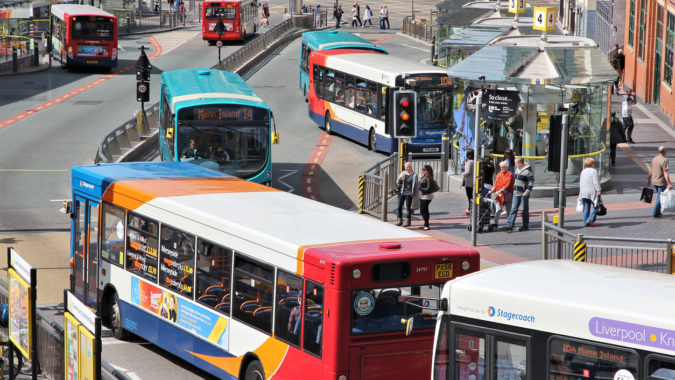These days, most people in the UK probably don’t give a second thought to the idea of emailing festive greetings: texting a quick ‘thank you’ on Christmas morning, or doing a video call with those who couldn’t be there to celebrate in person. Today’s smartphones conveniently allow us to communicate with others anywhere in the world with a few taps on a screen.
But the digital wireless broadband technology we’ll all use over the festive season did not happen by accident. It’s the result of nearly two centuries of both technological innovation and periodic revolutions that have transformed how we communicate over distance.
How did we arrive where we are today? Our new historic telecoms dataset illustrates the story.
It starts in the 19th century, when communication in England and Wales was revolutionized by telegraphy, the first long distance electric communication – specifically, a single telegraph line between Paddington and Slough in 1838. In just under twenty years, the ground breaking transatlantic cable linking Ireland and Newfoundland made communications international. These pioneering steps laid the foundations for the modern global telecommunications network.
Initially managed by private entities like the Electric Telegraph Company, control of the telegraph network transitioned to the government’s hands through the General Post Office (GPO) in 1868, marking the start of a nationwide system. Telegram volumes did not take off straight away due to the cost: for example in 1870, it cost one shilling1 to send a standard inland telegram in the UK (around seven pounds in today’s prices), so telegrams were reserved mainly for urgent or crucial messages therefore limited in volume.
Towards the end of the century the UK saw the emergence of telephony, which allowed direct voice communication for the first time. The first telephone exchange was installed in London in 1879, but it was initially viewed as a novelty.
As telegraph technology advanced and the network expanded, telegrams became more affordable, and more individuals and businesses embraced it. By 1920, the cost of a telegram came down to just under three pounds in today’s prices, increasing accessibility across the UK and driving a surge in telegrams, reaching 101 million telegrams sent in 1920. This equates to around 140 gigabytes: impressive at the time but 402 times smaller than today’s average annual fixed broadband usage.
After this point telephony began to grow significantly, particularly following the installation of the first public telephone kiosks in 1920. People started to opt for the more convenient communication technology and the use of telegrams dropped considerably.
As the demands on the telecommunication infrastructure grew, the GPO introduced Telex, a teleprinter technology that transmitted through a closed network and which offered greater security and reliability compared to telegraphs and telephones. This made it popular for both government and business communications, and its legacy has lingered and shaped modern messaging systems.
The 1960s saw a skyrocketing number of telephone calls, surpassing the total of the first 25 years within a single year in 1970. The GPO held sway over telecommunications until the industry’s privatization in 1984. From this point on, the UK government deregulated telecommunications, paving the way for British Telecom’s privatization. This move spurred unprecedented competition, opening doors for new providers.
The growth in telephony continued and by the end of the century, 95%3 of households owned one or more telephones. But the 1990s also heralded the era of the mobile phone, transforming communication by enabling on-the-go connectivity. SMS (short message service) became a sensation, offering a cost-effective way to exchange short messages, swiftly embraced by users; the introduction of MMS (multimedia message service) further enhanced mobile communication. Around the turn of the century, fixed-line telephone usage began to decline and mobile phone usage increased, marking a significant cross-over point in telecommunication technology. Mobile phone call volumes have remained on an upward trend since.
And fixed landlines? Well, ask yourself: when did you last use one?
The 21st century has brought further technological advancements in UK telecommunications with the rise of broadband internet, voice over IP technology (internet voice calls), and the increasing use of smartphones and mobile devices.
In recent years, the industry has also invested in the development of 5G networks, which are expected to revolutionize mobile communications and enable new applications such as autonomous vehicles and smart cities, as explored in the Commission’s Second National Infrastructure Assessment.
The ability to connect with friends and loved ones far away, quickly, reliably and at low cost is now a reality for most of us and our historic telecommunications data – much of which we’re making widely available for everyone to see and use for the first time – shows just how far we’ve come: from telegraphs to wired telephones to wireless, from 1G to 5G, from expensive to affordable communication.
So when you video chat with your grandparents to thank them for the sweater you are wearing on Christmas morning, just think what might have happened if the 19th century telegraph had been a flop.
Let us know if you’ve found our data interesting or plan on using it in your work or studies.
We will continue to add more data and interactive visualisations to these pages, so make sure to bookmark the data page and keep an eye out for future uploads.
Nadir Hussain is an economist in the Commission’s Analysis and Modelling team.
Footnote
The Commission worked with Osiris-AI consultants, with the help of Dr Alexis Litvine and Dr Oliver Buxton Dunn of the University of Cambridge, to collate telecommunications statistics from before a time where records were digitised. In addition to this the Commission also undertook further research to create an extensive timeline of data. Full details are available in Osiris-AI’s report and within the Excel dataset, both available to download.
Real price conversions have been calculated using ONS long run RPI (CDKO)
Sources
1: Great Britain Philatelic Society (Inland Telegram Rates 1870-1982), https://www.gbps.org.uk/information/rates/inland/telegrams.php
2: Ofcom (The Communications Market 2023), https://www.ofcom.org.uk/research-and-data/multi-sector-research/cmr/2023
3: Oftel (Annual report 1999), The National Archives, p. 15



